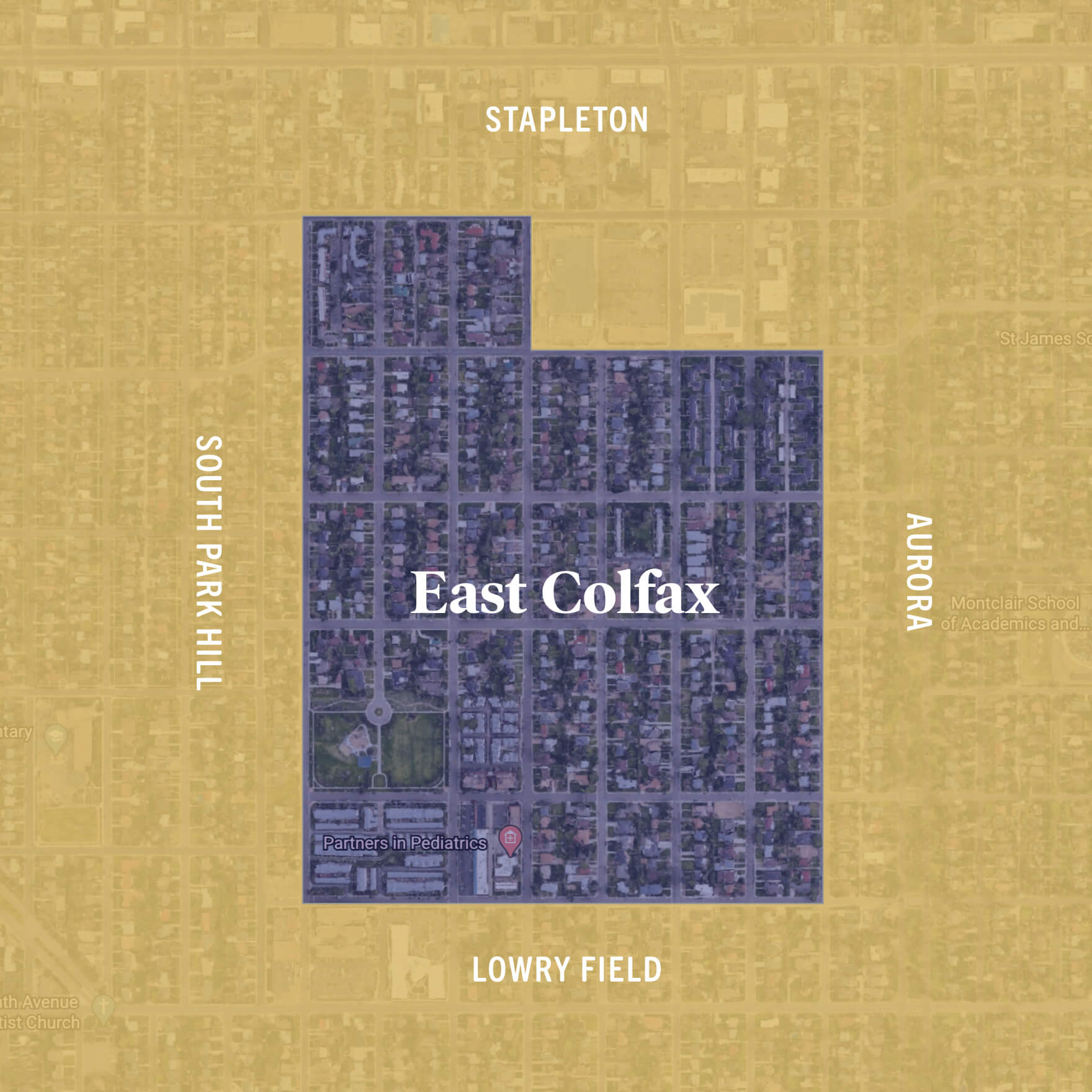Dee Dee DeVuyst
RADIAN
Program Manager of Equitable Development

The Colorado Equity Compass provides organizations and individuals with the data storytelling resources they need to improve health equity in their communities. For more information see our Data Storytelling Guide
The following 6 steps show how to bring data storytelling to life.
The East Colfax neighborhood is one of Denver’s most diverse and culturally rich neighborhoods. However, due to economic growth in the area, residents are highly vulnerable to involuntary displacement, a lack of affordable housing, and rising income inequality. These challenges are expected to be exacerbated by a sudden rise in real estate costs and increased development.

CEC’s community partner, Radian, identified displacement as their focus area as the community was seeing a lot of city development forcing its residents to move out of the East Colfax neighborhood. Radian partnered with community organizations, including the East Colfax Neighborhood Association and East Colfax Community Collective (ECCC), on the CEC project to create an equitable development plan. ECCC later identified business conditions and displacement as an additional area of focus.
3. Existing Data
Progressive Urban Management Associates and Root Policy Research had gathered data and created reports on economic development and resiliency, market assessments, and community trends that were helpful to the East Colfax neighborhood. Radian recognized there were many potential partners to collaborate with including The Fax, Brothers Redevelopment, and Mercy Housing, that may have data or surveys already available.
4. Data Gaps
Radian acknowledged that when they use shared data from other organizations, it is hard to know if the survey data accurately represents the entire community or only populations that are easy to access within their time and resource constraints. One of the biggest challenges is considering how not to over-survey and exhaust under-resourced communities. Radian also did not have formal data sharing agreements, which would be helpful for collaborative work in the community and reducing overlaps in data collection.
5. Meaning of the Data
The East Colfax Neighborhood data showed that median household income was increasing in the neighborhood which was not a reflection of positive growth for current residents, but instead that new people with higher incomes were moving into the neighborhood. In the past few years, the community saw a significant drop in families with children, immigrant populations, and those with Sub-Saharan African ancestry. The current displacement pressures have been caused by a history of redlining, unfavorable lending, mass foreclosures, and weak housing production.
6. Engaging Stories
From community stories, residents and business owners shared how they felt the pressures of being forced out of the neighborhood as costs were on the rise. CEC will continue working with the organizations to put together these stories more formally into pull quotes and infographics, audio clips, and possibly a photo voice project. Radian was also in conversation with I Am Denver about storytelling capabilities.
7. Data Storytelling
The data supported by Colorado Futures Center was used to develop a Story Map to make a case for community stability. Additional data gathered by Shift Research Lab was shared with the East Colfax Community Collaborative to build upon the organization’s work to stop displacement by better understanding the displacement pressures (both for residents and businesses).